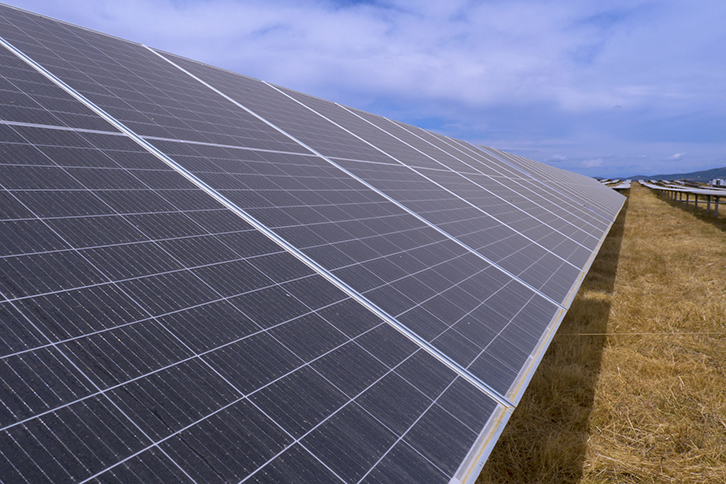Iberdrola starts up ‘Francisco Pizarro’, the largest photovoltaic plant in Europe
- The plant will produce enough clean energy to power more than 334,000 homes and prevent the emission of 150,000 tonnes of CO2 per year.
- With an installed capacity of 590 MW and an investment of 300 million euros, its construction has generated more than 1,500 jobs.
- This renewable installation is the Iberdrola group’s largest photovoltaic plant in the world with nearly 1.5 million photovoltaic modules.
Iberdrola has put into operation the ‘Francisco Pizarro’ project in Extremadura, the largest photovoltaic plant in Europe and the largest facility of this type operated by the group in the world. Located between the municipalities of Torrecillas de la Tiesta and Aldeacentenera (Cáceres), the plant has an installed capacity of 590 megawatts (MW).
Francisco Pizarro’ is made up of around 1.5 million photovoltaic modules that will generate enough clean energy to supply more than 334,000 homes – more than the populations of Badajoz, Cáceres, Plasencia and Don Benito combined – and will prevent the emission of 150,000 tonnes of CO2 into the atmosphere per year.
The project, which has involved an investment of more than 300 million euros, has generated more than 1,500 jobs during peak construction periods, 60% of which were filled by local workers.
Iberdrola has guaranteed the viability of this project by signing long-term power purchase agreements (PPAs) with leading companies in different sectors. Thus, the company will supply 100% renewable electricity from this plant to Danone, Bayer and PepsiCo to cover the energy needs of their centres in Spain.
These contracts bring stability to investments and have become an optimal tool for managing the electricity supply of large customers committed to accelerating the energy transition to reduce dependence on fossil fuels and to clean and sustainable consumption.
COEXISTENCE WITH THE ENVIRONMENT AND CULTURAL HERITAGE
The ‘Francisco Pizarro’ photovoltaic plant is an example of the coexistence of new renewable developments with environmental and cultural heritage. During the execution of the project, Iberdrola has guaranteed at all times the preservation of the natural environment and the archaeological remains discovered thanks to the previous prospecting work.
Specifically, some twenty rock formations with rock art, mainly prehistoric, and three archaeological sites dating from the Ancient and Medieval periods were located.
Following the discovery, all the necessary measures were taken for the control, excavation and safeguarding of these remains by the company.
In terms of environmental protection, specific measures were taken to improve forest fauna habitats, such as the creation of a controlled reproduction centre for rabbit breeding, the installation of nesting boxes and the establishment of bird feeding protection areas. Iberdrola also participated in the Spanish Ornithological Society’s (SEO) campaign to monitor steppe birds in Extremadura, identifying and protecting a breeding area for these birds, specifically the little bustard.
In addition, the plant has an environmental integration plan that allows the land to be used as pasture for sheep farming in the area.
Commitment to an inexhaustible source of energy accessible to everyone
The Iberdrola group leads the renewable energy sector in Spain with an installed capacity of more than 19,300 MW, which will reach 25,000 MW in the coming years thanks to its investment plan. The company plans to allocate 14.3 billion by 2025 to the deployment of an ambitious renewables and smart grids plan.
Extremadura will play a key role in this development. In the period 2020-2025 alone, the company will have installed more than 2,800 MW of renewable energy in the region, with an investment of more than 1,700 million euros, which will have generated some 7,400 jobs over the five-year period.
This inexhaustible green energy source will be key to the energy transition by enabling the production of electricity on a large scale, as in the case of the Francisco Pizarro plant, and through small generators thanks to self-consumption.
Iberdrola, which already manages 40% of the self-consumption installations in Spain, will continue to be a driving force in the coming years for this technology which, in addition to reducing energy bills, protects against potential variations in energy prices and enables the generation of CO2 emission-free energy.

